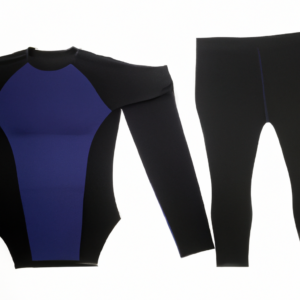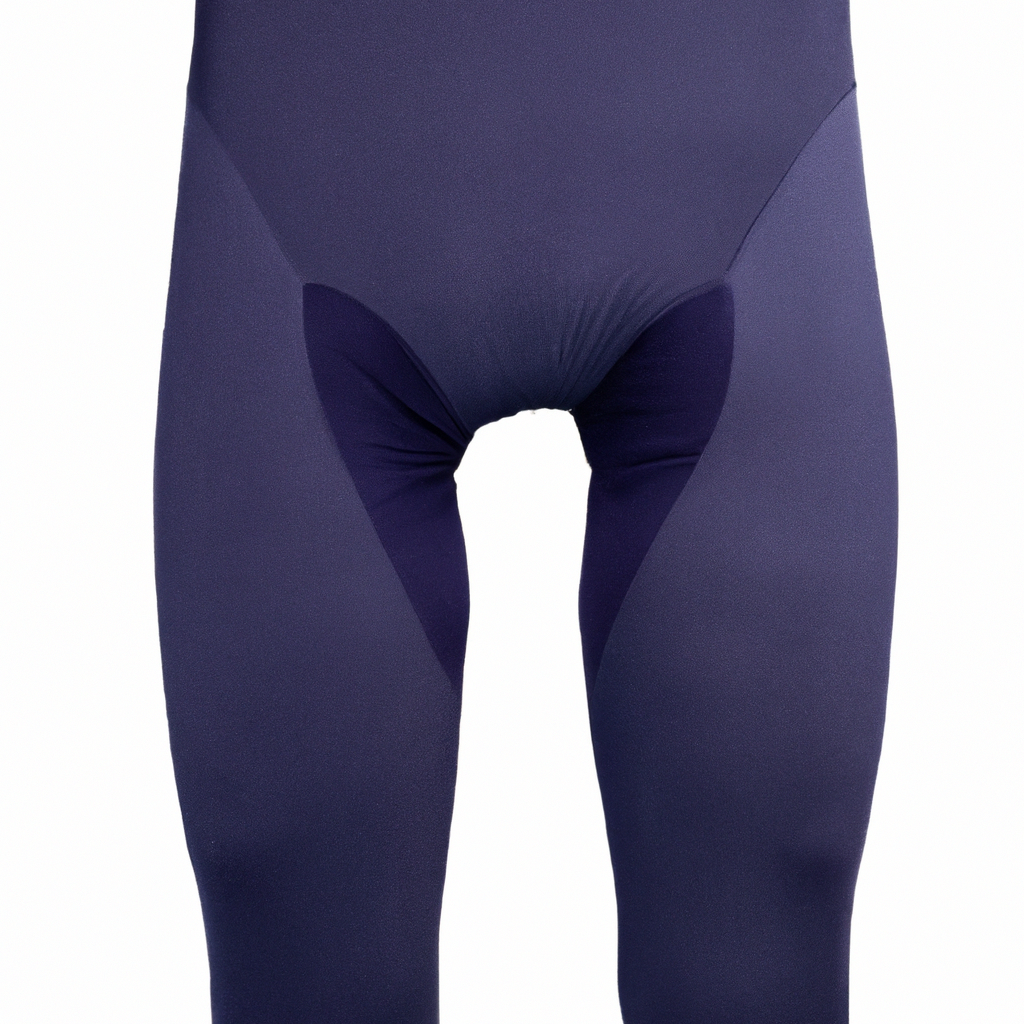Compression clothing has become increasingly popular in recent years, with athletes, travelers, and individuals with specific medical conditions embracing its benefits. But have you ever wondered how compression clothing works its magic? In this article, we will dive deep into the science behind compression clothing and explore its myriad applications, from improving blood circulation to aiding in muscle recovery.

Introduction to Compression Clothing
Definition of compression clothing: Compression clothing is a specialized type of apparel designed to fit snugly around specific areas of the body, exerting pressure to enhance various physiological processes. These garments are often made from elastic materials and are available in various forms, including socks, sleeves, stockings, and full-body suits.
Popularity and usage: The use of compression clothing has gained immense popularity among athletes, travelers, pregnant women, and individuals seeking relief from medical conditions like edema and varicose veins.
Importance of understanding how it works: To maximize the benefits of compression clothing, it’s crucial to understand the underlying science of how it functions. Let’s unravel the mechanics behind this innovative apparel.
The Mechanics of Compression
Compression garments rely on a simple yet effective principle – applying external pressure to specific body parts. This pressure is strategically designed to be tighter at the extremities and gradually decrease towards the core. The primary materials used in compression clothes are elastic, allowing for a snug fit without restricting movement.
Explaining compression technology
Compression technology involves the use of specialized sewing techniques and fabric blends. These fabrics have the capacity to stretch and then gently squeeze the targeted body parts.
How compression garments are designed
Compression clothing is crafted with precision, ensuring the right level of compression for various purposes. Garments can be designed to target specific areas such as legs, arms, or the abdomen.
Benefits of compression
The application of pressure by compression clothing serves multiple purposes, including:
- Enhancing blood circulation
- Providing support to muscles
- Reducing swelling and edema
These benefits are why compression clothing is widely used in different contexts, from sports performance to medical treatment.
Understanding Compression Levels
Compression garments come in different compression levels, which are typically measured in millimeters of mercury (mmHg). Understanding these levels is essential for selecting the right garment for your needs.
Graduated compression
Most compression clothing is designed with graduated compression, meaning the pressure is highest at the extremities and gradually decreases as it moves towards the core. This design helps promote better circulation.
Different compression levels
Compression levels vary, ranging from mild (15-20 mmHg) to extra firm (30-40 mmHg). Choosing the appropriate level depends on your specific requirements and any medical recommendations.
Choosing the right compression level
To benefit from compression clothing, it’s crucial to select the right level. Consultation with a healthcare professional can help determine the ideal compression level for your needs.
Improving Blood Circulation
One of the primary functions of compression clothing is to enhance blood circulation throughout the body.
Role of compression in enhancing blood flow
Compression garments help blood vessels constrict, which encourages blood to flow more efficiently. This is particularly beneficial for individuals who sit or stand for extended periods.
Reducing the risk of blood clots
Compression clothing can significantly reduce the risk of blood clots, especially during long flights or after surgery.
Recovery after physical activity
Athletes often use compression clothing to accelerate recovery after intense workouts. By promoting better blood flow, these garments aid in muscle repair and reduce soreness.
Muscle Support and Recovery
Another notable benefit of compression clothing is its ability to support muscles during physical activity and expedite recovery afterward.
Supporting muscle during exercise
Compression garments provide stability to muscles, reducing vibrations that can lead to fatigue and injury during exercise.
Post-workout recovery
Wearing compression clothing post-workout can help alleviate muscle soreness, enabling athletes to get back to training more quickly.
Alleviating muscle soreness
Compression’s gentle pressure on muscles can ease soreness and discomfort, making it a popular choice among runners, weightlifters, and other athletes.
Reducing Swelling and Edema
Compression clothing is also effective in reducing swelling and managing conditions like edema.
Treating edema with compression garments
People with edema, a condition characterized by the accumulation of excess fluid in tissues, often find relief through the use of compression stockings or sleeves.
Minimizing swelling during pregnancy
Pregnant women often experience swelling in their legs and feet. Maternity compression wear can help alleviate this discomfort.
Post-surgery benefits
After surgery, compression clothing can aid in reducing postoperative swelling and promoting healing.
Compression Clothing in Sports
Athletes from various disciplines have embraced compression clothing for its potential to enhance performance and prevent injuries.
Performance enhancement
Compression garments are believed to improve oxygen delivery to muscles, potentially boosting endurance and power output.
Injury prevention
By providing muscle support and reducing muscle vibration, compression clothing can help prevent injuries like muscle strains and tears.
Athlete testimonials
Many professional athletes endorse the benefits of compression clothing, citing improved recovery and performance as key factors.
Compression Clothing for Medical Conditions
Compression clothing serves as a valuable tool in managing several medical conditions.
Lymphedema management
Patients with lymphedema, a condition involving swelling due to damaged lymphatic vessels, often rely on compression sleeves and garments for relief.
Varicose vein treatment
Compression stockings are commonly recommended to individuals with varicose veins to improve blood circulation and reduce symptoms.
Chronic venous insufficiency
Compression therapy is also used to manage chronic venous insufficiency, a condition where blood pools in the legs due to weakened vein valves.
How to Wear Compression Clothing
Using compression clothing correctly is essential to maximize its benefits.
Proper fitting and sizing
Getting the right size is crucial. Consult the sizing chart provided by the manufacturer or seek guidance from a healthcare professional.
Putting on and taking off compression garments
Putting on compression garments can be a bit challenging, but following the proper technique makes it easier. Taking them off correctly is also important to avoid damaging the fabric.
Care and maintenance
Maintaining the quality of compression clothing involves proper washing and storage. Always follow the care instructions provided.
Who Should Use Compression Clothing
Compression clothing is suitable for various individuals, each with their unique needs.
Athletes and fitness enthusiasts
Athletes looking to improve performance and reduce the risk of injuries can benefit from compression wear.
Individuals with medical conditions
People with conditions like edema, varicose veins, or chronic venous insufficiency can find relief and management through compression garments.
Frequent travelers
Compression stockings are a popular choice for travelers to minimize the risk of deep vein thrombosis (DVT) during long flights.
Common Myths and Misconceptions
As with any popular product, compression clothing has its fair share of myths and misconceptions.
Debunking misconceptions about compression clothing
We’ll explore common myths and provide evidence-based explanations to separate fact from fiction.
Separating fact from fiction
Understanding the science behind compression clothing helps dispel unfounded claims and misunderstandings.
Compression Clothing vs. Regular Clothing
While compression clothing shares some similarities with regular attire, there are key differences that set them apart.
Key differences and benefits
We’ll highlight the distinct features of compression clothing and when it’s preferable over regular clothing.
When to choose compression over regular clothing
Knowing when to opt for compression wear can help you make informed choices for different activities and situations.
Choosing the Right Compression Garments
Selecting the right compression garment involves considering several factors.
Selecting the appropriate type
Compression garments come in various forms. Choosing the right type depends on your needs and preferences.
Factors to consider when purchasing
Factors such as material, fit, and intended use play a crucial role in selecting the best compression garment for your situation.
Research and Scientific Evidence
Scientific studies have explored the effectiveness of compression clothing in various contexts.
Studies on the effectiveness of compression clothing
We’ll delve into research findings that support the use of compression clothing for specific purposes.
Scientific findings supporting its benefits
Understanding the scientific evidence can provide confidence in the use of compression clothing for health and performance.
Conclusion
In summary, compression clothing offers a wide range of benefits, from improving blood circulation to aiding in muscle recovery and managing medical conditions. Understanding the science behind compression technology is key to making informed choices about its use in different scenarios.
